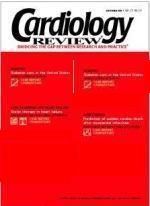Publication
Article
Cardiology Review® Online
Carvedilol improves insulin resistance, maintains glycemic control in high-risk diabetic patients
NEW ORLEANS—Carvedilol has a neutral effect on glycemic control and improves components of the metabolic syndrome in patients with type 2 diabetes and hypertension who are already receiving therapy with a blocker of the renin-angiotensin system (RAS), said George L. Bakris, MD, at the American Heart Association Scientific Sessions 2004.
Traditional beta blocking agents are usually avoided in patients with diabetes because they have been shown to worsen glycemic and metabolic control. The beta blocker carvedilol, which has antioxidant and alpha1 blocking properties in addition to its beta blocking effect, has been shown in previous trials to improve insulin sensitivity, said Dr. Bakris, director of the Hypertension/Clinical Research Center, Rush University Medical Center, Chicago.
In the Glycemic Effects in Diabetes Mellitus: Carvedilol-Metoprolol Comparison in Hypertensives (GEMINI) trial, 1,235 patients with controlled type 2 diabetes (baseline glycosylated hemoglobin [A1c] of 6.5% to 8.5%) and stage I or stage II hypertension who were already receiving therapy with a RAS inhibitor were randomly assigned to carvedilol, 6.25 to 25.0 mg, or metoprolol tartrate, 50 to 200 mg, each given twice daily. The addition of hydrochlorothiazide, 12.5 mg, and a dihydropyridine calcium antagonist was allowed if needed to achieve blood pressure target. Blinded therapy was maintained for 5 additional months following titration to target blood pressure.
The achieved blood pressure was similar between the two groups, with approximately two thirds of patients in each group reaching their target blood pressure. Mean treatment duration was shorter in the metoprolol compared with the carvedilol group (147 versus 155 days). “The difference in treatment duration was related to drug discontinuance due to a higher incidence
of side effects in the metoprolol group,” said Dr. Bakris. Bradycardia occurred significantly more often in the metoprolol group (P = .007), and more patients assigned to metoprolol reported worsening diabetes than those assigned to carvedilol (trend; P = .07). Some 2.2% of metoprolol recipients withdrew owing to worsening glycemic control compared with 0.6% of carvedilol recipients (P = .04).
The difference between the two groups in the mean change from baseline A1c was the primary end point. A1c increased by 0.15% (P < .001) in metoprolol recipients but
did not change significantly ( 0.02%, P = .65) in patients allocated to carvedilol. The difference in A1c between the two treatment groups, 0.13%, was significant (P = .004).
An increase in A1c of more than 1%, which has been associated with an increased risk of cardiovascular events, occurred in 14.2% of metoprolol and 7% of carvedilol recipients (P < .001). Insulin resistance by homeostatic model assessment improved significantly from baseline in patients assigned to carvedilol (—9.1%; P = .004) but not metoprolol (–2.0%; P = .48).
The albumin:creatinine ratio was reduced by 16% (P = .003) in patients taking carvedilol compared with those taking metoprolol. Eighty percent of the patients did not have microalbuminuria upon entering the study. Among these patients, the risk of developing microalbuminuria was reduced by 47% with carvedilol relative to metoprolol (incidence: 6.6% versus 11.1%; P = .03).
Metoprolol recipients gained a mean of 2.6 pounds compared with no significant weight gain in patients taking carvedilol (treatment difference: P < .001).
“Carvedilol, in comparison to metoprolol, achieved blood pressure goal while maintaining glycemic control, improving insulin resistance, and reducing progression to microalbuminuria in these high-risk cardiovascular patients,” said Dr. Bakris.
